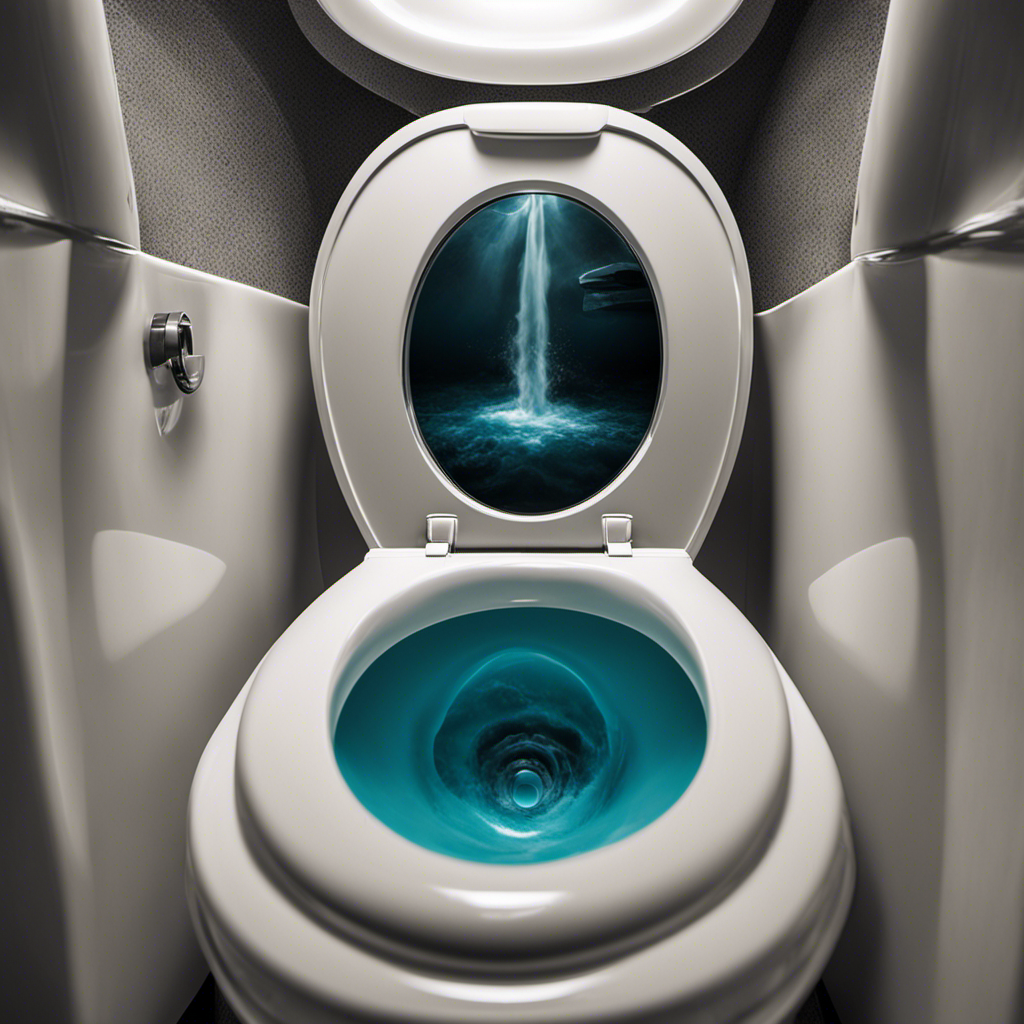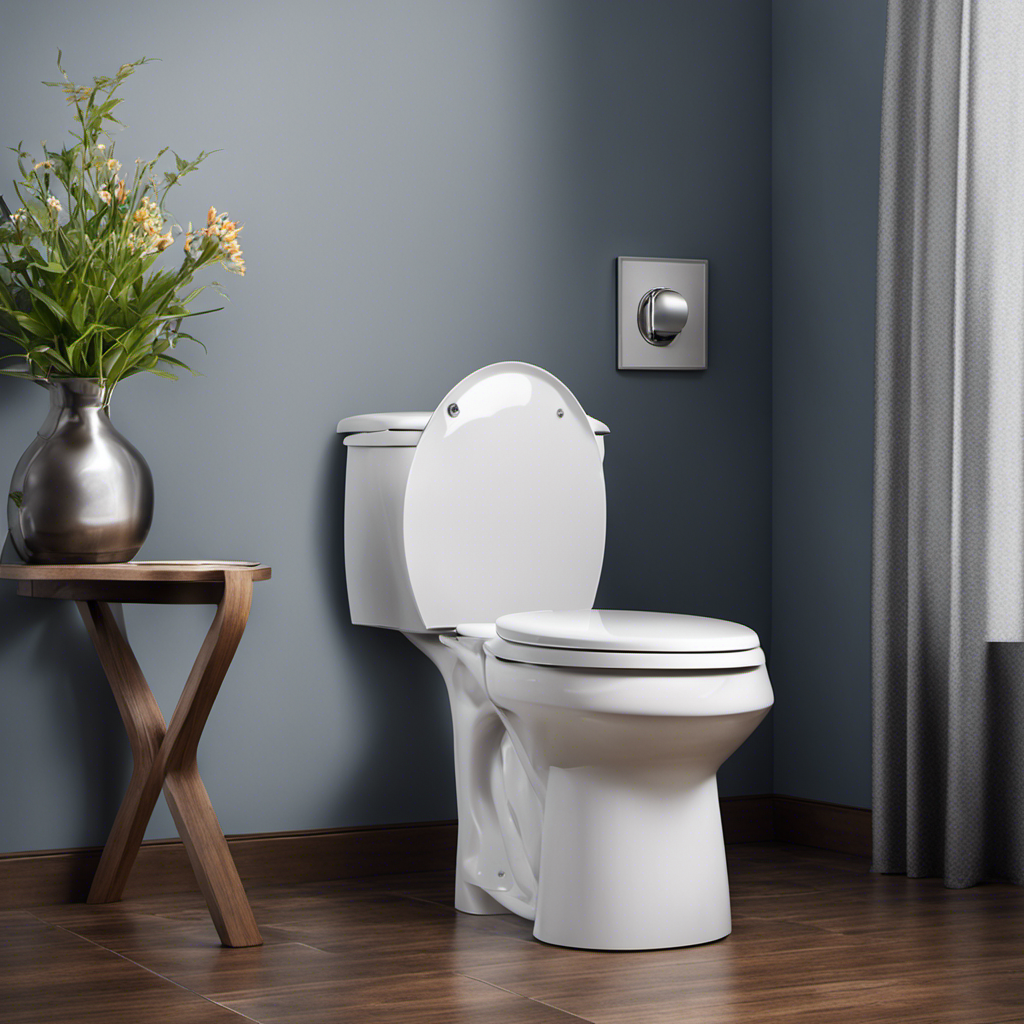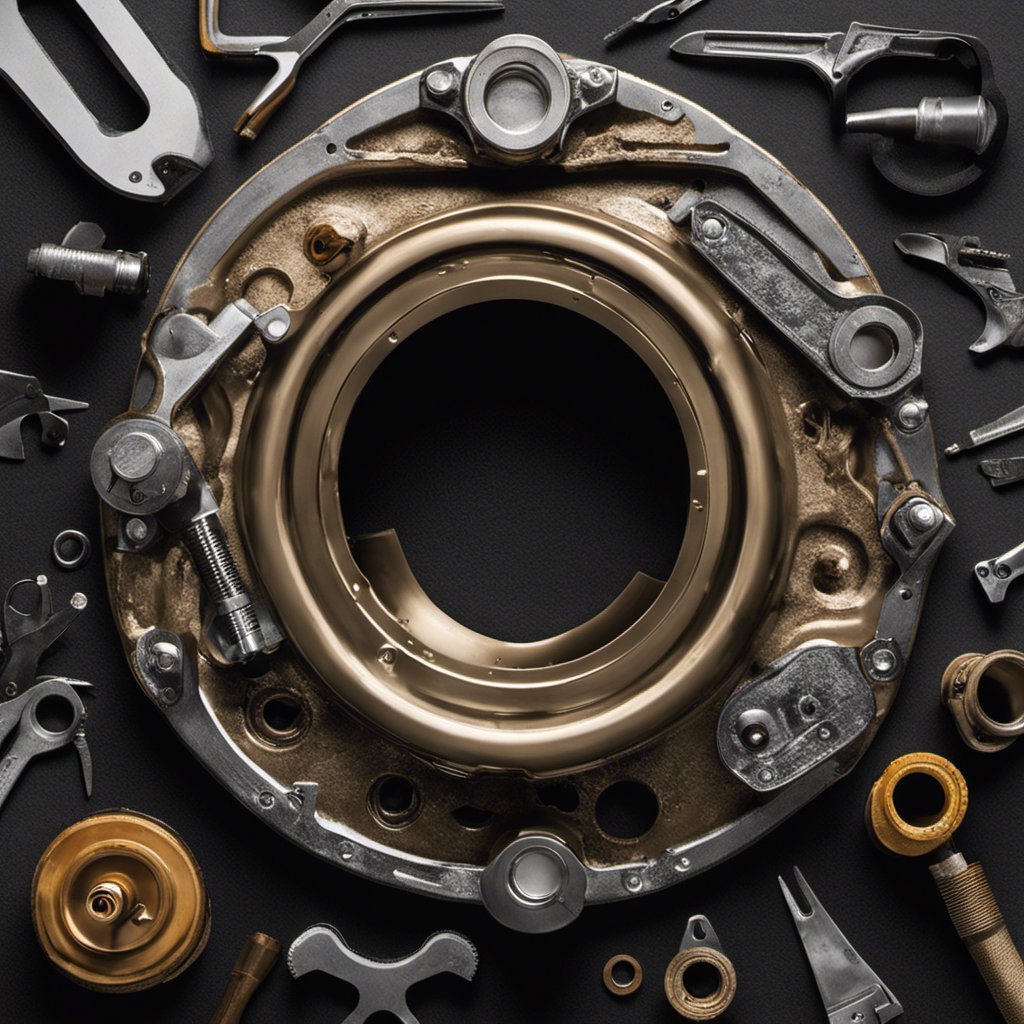Did you know that a whistling toilet is a common plumbing issue that many homeowners face? It can be both annoying and frustrating to hear that high-pitched sound every time you flush.
But fear not, because in this article, I will share with you the common causes of toilet whistling, how the plumbing system in your toilet works, and DIY solutions to fix this problem.
So, let’s dive in and put an end to that irritating toilet whistle once and for all!
Key Takeaways
- Toilet whistling can be caused by issues with the fill valve and problems with the flapper.
- Understanding the plumbing system in your toilet, such as checking the water supply valve and regularly maintaining the toilet bowl, can help prevent toilet whistling.
- Water pressure can affect toilet whistling, with high water pressure causing water hammer and low water pressure causing fill valve issues.
- DIY solutions for fixing toilet whistling include checking for blockages, adjusting the fill valve, replacing faulty parts, and clearing out debris or mineral buildup.
Common Causes of Toilet Whistling
If you’re wondering why your toilet is whistling, it’s usually caused by issues with the fill valve or the flapper.
The toilet whistle sound occurs when there is a problem with the water flow or pressure inside the toilet tank.
One common reason for toilet whistling is a faulty fill valve. This valve controls the water level and flow into the tank. If it is not working properly, it can cause a whistling noise.
Another possible culprit is a worn-out or improperly seated flapper. The flapper is responsible for sealing the tank and preventing water from continuously flowing into the bowl. If it is damaged or not closing tightly, it can create a high-pitched whistle.
Regular maintenance and inspection of these components can help prevent toilet whistling and ensure proper functioning of your toilet.
Understanding the Plumbing System in Your Toilet
To better understand the plumbing system in your toilet, start by checking the water supply valve. This valve is usually located near the base of the toilet, and it controls the flow of water into the tank. It is important to ensure that the valve is fully open to allow for proper water supply to the toilet.
Additionally, it is essential to regularly maintain the toilet bowl to prevent any clogs or blockages. This can be done by using a toilet brush to clean the inside of the bowl and by regularly flushing with enough water to clear away any debris.
Understanding the various toilet flushing mechanisms is also crucial. Different toilets may have different types of flush handles or buttons, and understanding how they work can help in troubleshooting any issues that may arise.
How Water Pressure Affects Toilet Whistling
Water pressure greatly affects the whistling sound in a toilet. When the water pressure is too high, it can create a phenomenon known as water hammer, which can cause the pipes in the toilet to vibrate and produce a whistling noise. This can be quite annoying and disruptive, especially if it happens frequently. Additionally, high water pressure can also have a negative impact on the overall performance of the toilet. It can cause the toilet to constantly run or not flush properly, leading to water wastage and potential plumbing issues. On the other hand, low water pressure can also result in a whistling sound, as it can cause the fill valve to struggle to fill the tank properly. Maintaining the right water pressure is essential for a well-functioning and quiet toilet.
| Water Pressure Level | Whistling Sound | Impact on Toilet Performance |
|---|---|---|
| High | Yes | Negative |
| Low | Yes | Negative |
| Moderate | No | Positive |
Fixing Toilet Whistling: DIY Solutions
You can easily fix the whistling in your toilet by adjusting the water pressure. Here are three simple steps to help you solve the problem:
-
Check for blockages: Sometimes, a whistling noise in the toilet can be caused by a blockage in the pipes. Check for any obstructions, such as debris or mineral buildup, and clear them out if necessary.
-
Adjust the fill valve: The fill valve controls the water level in the toilet tank. If it’s set too high, it can create excess pressure, resulting in a whistling sound. Try lowering the water level by adjusting the fill valve to see if it solves the problem.
-
Replace faulty parts: If adjusting the water pressure doesn’t work, it may be necessary to replace certain parts, such as the fill valve or the flapper. These components can wear out over time and cause the toilet to whistle. By replacing them, you can restore proper functioning and eliminate the noise.
When to Call a Professional for Toilet Whistling Issues
If the DIY solutions for fixing toilet whistling don’t solve the problem, it may be time to consider calling a professional.
While there are several signs of a malfunctioning toilet, such as whistling or hissing sounds, it’s important to understand the importance of regular toilet maintenance.
A professional plumber has the expertise to diagnose and fix the underlying issues causing the whistling sound in your toilet. They can check the fill valve, flush valve, and water pressure to ensure everything is functioning properly.
Regular maintenance can prevent more serious problems down the line, saving you time and money in the long run.
Conclusion
In conclusion, toilet whistling can be a common issue caused by various factors. These factors include high water pressure or faulty plumbing. It can be resolved through DIY solutions like adjusting the fill valve or replacing the flapper. However, if the problem persists, it is advisable to seek professional help to avoid further damage.
Interestingly, according to a study by plumbing experts, nearly 30% of toilet whistling cases are due to excessive water pressure. This highlights the importance of monitoring and regulating water pressure in your plumbing system.










